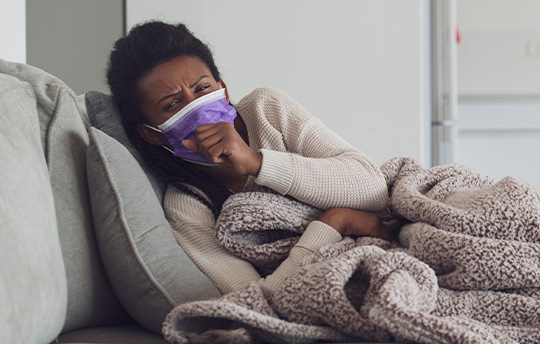 The U.S. has been greatly affected with the outbreak of COVID-19. The Centers for Disease Control and Prevention (CDC) states that COVID-19 is a respiratory disease spreading from person to person caused by a new (novel) coronavirus. In the U.S., different parts of the country are seeing different levels of COVID-19 activity. The complete clinical understanding of COVID-19 is not fully known, but the CDC reported illnesses range from very mild to severe, including illness resulting in death.
The U.S. has been greatly affected with the outbreak of COVID-19. The Centers for Disease Control and Prevention (CDC) states that COVID-19 is a respiratory disease spreading from person to person caused by a new (novel) coronavirus. In the U.S., different parts of the country are seeing different levels of COVID-19 activity. The complete clinical understanding of COVID-19 is not fully known, but the CDC reported illnesses range from very mild to severe, including illness resulting in death.
Tobacco-Linked Risk
Those who are at a higher risk of catching the virus are older adults and people of any age who have serious underlying medical conditions. It has also been reported that people who smoke or use e-cigarettes may be at a greater risk for coronavirus.
According to the World Health Organization (WHO), smokers are likely to catch a severe or life-threatening case of COVID-19, specifically since smokers may already suffer from lung disease and reduced lung capacity, increasing their risk of serious complications from COVID-19 infection. Additionally, smoking a cigarette can increase the likelihood the virus will be transmitted from a smoker’s fingers to their mouth.
The World Health Organization also states that smoking-related conditions that increase a patient’s need for oxygen—or reduce one’s ability to sufficiently oxygenate their blood—put patients at higher risk for viral pneumonia, such as that caused by influenza or COVID-19.
Further research needs to be done on the impact of COVID-19 infected patients that use tobacco products, but it is reasonable to suspect that the habit of smoking increases the risk of contracting a severe case of the disease. One way to decrease the risk of contracting the virus is to give up cigarettes and e-cigarettes.
Strategies & Programs to Change Tobacco Statistics
If you are looking to take the first step in quitting smoking, The Wellness Coalition offers free resources to help at thewellnesscoalition.org/tobacco.
Along with tobacco cessation, the REACH team is working to impact the River Region with their strategies geared towards tobacco. The goal for REACH Year 2 is to decrease the number of workplaces and multi-unit housing complexes that allow second-hand smoke exposure. We plan to accomplish this through the implementation of smoke-free policies.
The REACH team is working to identify a multi-unit housing complex that will create, adopt and enforce a smoke-free policy. Our team has been researching effective ways to implement smoke-free policies and eligible multi-unit housing complexes within our 42 census tracts. From this research, additional training and education is available and shared with those multi-unit housing complexes that are interested in implementing a smoke-free policy. An interest meeting will be scheduled for those property managers and owners to learn more about smoke-free policies.
The Effectiveness of Smoke-Free Policies

Smoke-free policies have been successful in Jefferson County, AL and Atlanta, GA. According to AL.com, The Birmingham City Council passed a smoke-free ordinance that created a massive no-smoking zone that spans about 100 city blocks around UAB, Children’s Hospital, and the VA Hospital. Property owners within these city blocks can create a designated smoking area for their tenants and workers. Birmingham had already banned smoking in most public places and businesses in 2012.
The American Cancer Society stated that on July 1, 2019, the Atlanta City Council passed a smoke-free ordinance that banned smoking in workplaces, including restaurants, bars, and the airport. This campaign was led by the American Cancer Society and the Smoke-Free ATL Coalition.
Expanding Partnerships to Reach our Goals
Along with research, REACH is collaborating with various organizations such as Alabama Department of Public Health Tobacco Division and American Heart Association (AHA). The AHA is a leading authority on the impact of tobacco usage and related health concerns. AHA provides the public with vital information on the health risks associated with tobacco usage, vaping, and nicotine use on health, as well as the best practices for smoking and vaping cessation.
AHA also works to empower consumers to advocate for laws and policies that help prevent and reduce tobacco use. Through conversations with AHA, REACH has been able to connect with the American Lung Association and American Nonsmokers’ Rights Foundation. Both organizations have done a great amount of work with smoke-free policies for multi-unit housing complexes.
One purpose of implementing smoke-free policies is for the health benefits that come along with eliminating tobacco usage. Secondhand smoke exposure in multi-unit housing units is a common problem and dangerous for all tenants. The CDC states that secondhand smoke can leak into other units on the property through ventilation systems, electrical lines, doorways, cracks, and plumbing. Exposure to secondhand smoke can lead to serious health problems such as heart disease, lung cancer, stroke, asthma, and sudden infant death syndrome (SIDS).
Tenants can be protected from all these health issues if exposure to secondhand smoke is removed from the places where they live and work. After all, during a pandemic, increasing everyone’s health in as many ways as possible can help provide better outcomes for entire populations.
